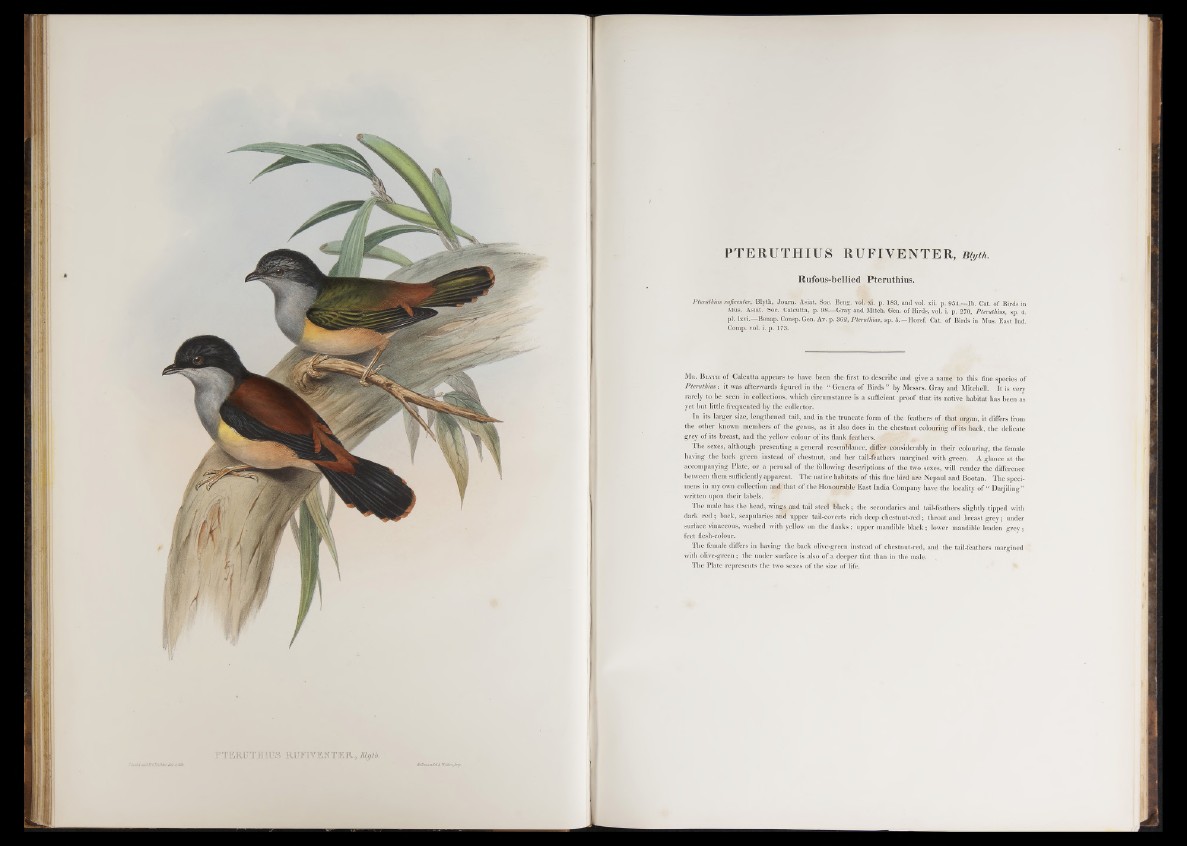
PTERUTHIUS RUFIVENTER, my th.
Rufous-bellied Pteruthius.
Pterifthius rufiventer, Blyth, Journ. Asiat. Soc. Beng. v o lü i. p. 183, and vol. xii. p. 954.—lb. Cat. of Birds in
Mus. Asiat. Soc. Calcutta, p. 98.—Gray and Mitch. Gen. of Birds, vol. i. p. 270, Pteruthius, sp. 4.
pi. lxvi.—Bonap. Consp. Gen. Av. p. 362, Pteruthius, sp. 5.—Horsf. Cat. of Birds in Mus. East Ind.
Comp. vol. i. p. 173.
M r . B ly th of Calcutta appears to have been the first to describe and give a name to this fine species of
P tm ith iu s: it was afterwards figured in the “ G enera of Birds ” by Messrs.-Gray and Mitchell. It is very
rarely to he seen in collections, which circumstance is a sufficient proof that its native habitat has been as
yet but little frequented by the collector.
In its larger size, lengthened tail, and in the truncate form o f the feathers of that organ, it differs from
the other known members of the genus, as it also does in the chestnut colouring of its hack, the delicate
grey of its breast, and the yellow colour of its flank feathers.
The sexes, although presenting a general resenfmance, differ considerably in their colouring, the female
having the back green instead o f chestnut, and her tailHathers margined with green. A glance at the
accompanying Plate, or a perusal of the following descriptions of the two sexes, will render the difference
between them sufficiently apparent. The native habitats of this fine bird are Nepaul and Bootan. The specimens
in my own collection and that of the Honourable East India Company have the locality of “ Darjiling ”
written upon their labels. J
The male has the head, wings^ and tail steel tilack; the secondaries and tail-feathers slightly tipped with
dark r e d ; back, scapularies arid' upper tail-coverts rich deep chestnut-red; throat and breast g rey ; under
surface vinaceous, washed with yellow on the flanks; upper mandible black; lower mandible leaden grey ;
feet flesh-colour.
The female differs in having the back olive-green instead of chestnut-red, and the tail-feathers margined
with olive-green; the under surface is also o f a deeper tint than in the male.
The Plate represents the two sexes of the size of life.